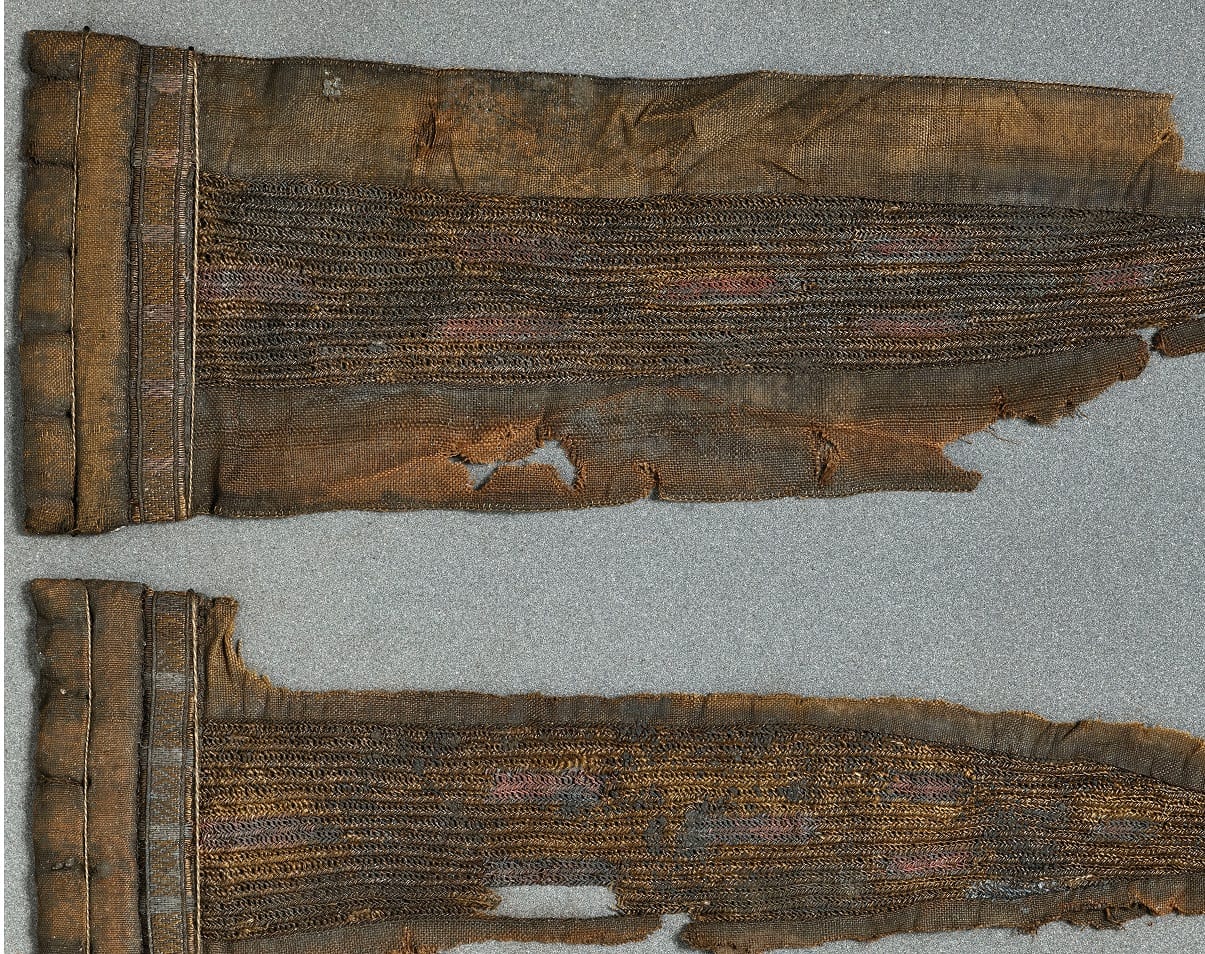Archaeologists in Denmark have found the remains of a Viking elite individual lost for over 100 years.
Attached textile fragments are already shedding light on this important person, revealing he was wearing a pair of uniquely decorated long trousers.
The remains were found in the Bjerringhøj burial mound, Denmark, during excavations in 1868. Rich grave goods found with the burial suggest it was an elite individual – perhaps even linked to the royal Jelling dynasty that later ruled over Denmark, England, and Norway.
However, efforts to study the important individual came to a halt when the human remains went missing sometime in the late 19th century.
Fast-forward to 2018, when a research project began studying Viking textiles in the National Museum of Denmark’s collection. Whilst examining those found at the Viking burial of Slotsbjergby, they found human remains that did not seem to fit with the rest of the grave.
“We opened the box and were puzzled, but soon realized that we had solved a mystery. We couldn’t believe our luck” said Dr Charlotte Rimstad from the National Museum of Denmark and lead author of this research.
Thorough analysis, published in the journal Antiquity, revealed they were the lost remains from Bjerringhøj.
The researchers found textiles attached to the bones that match others found at Bjerringhøj, and radiocarbon dating shows they are the right age, dating to the late 10th century AD.
“We are absolutely sure that we have found and re-identified the human bones from Bjerringhøj,” said Dr Charlotte Rimstad.
The remains are fragmentary, consisting of parts of the arms and legs. Nevertheless, the researchers were able to identify that they were of an adult older than 30 years with knee problems. It is hoped further investigation can shed important light on the lives of ancient Viking elites.
“The sex determination of the bones is still uncertain as we may have to individuals in the burial, but refined DNA analysis methods may be able to tell us more in the future,” said Research Professor Ulla Mannering from the National Museum of Denmark who is the leader of the Fashioning the Viking Age project.
Fortunately, the new find is shedding light on the research projects original goal – textiles.
The Bjerringhøj was already famous for the lavish clothing found at the site, featuring more silk than found at any other Danish Viking Age burial.
It turns out additional textile fragments survived attached to the human remains and together these are providing new clues about the attire of Viking elites.
Fragments found near the ankle confirm he was wearing long trousers ending in padded cuffs decorated with exquisite tablet-woven bands. This sort of decoration adds new information to the design of Viking Age trousers. Find out more
Header Image Credit : Antiquity





